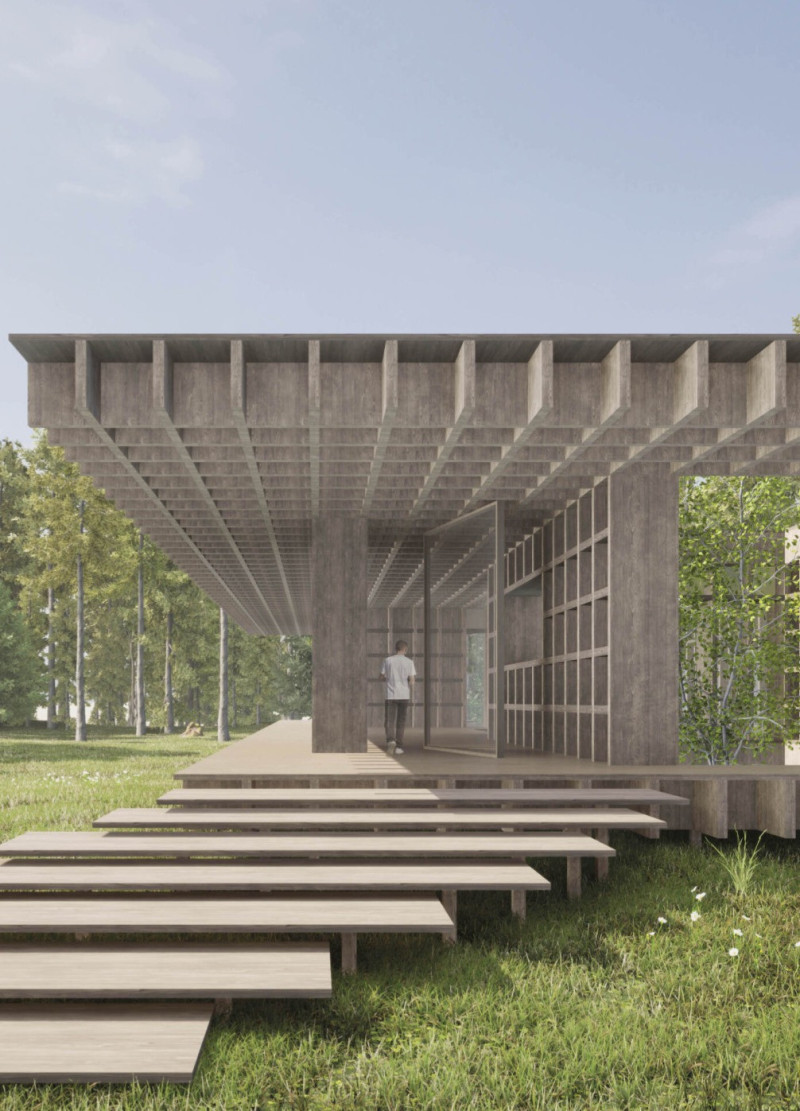5 key facts about this project
The primary function of the ENGAWA House is to provide a serene environment suitable for yoga and meditation. The design encourages a deep sense of reflection and peace, essential for both individual and group practices. The spatial arrangement is carefully considered, with an open-plan interior that allows for flexibility of use depending on the number of practitioners. Ample room is allocated for yoga mats, and the flowing spaces foster a sense of community while still allowing for personal moments of introspection.
One of the most notable aspects of the project is its relationship with the landscape. The architecture does not merely coexist with nature; instead, it actively engages with it. Through large glass facades, the pavilion offers unobstructed views of the forest, allowing natural light to flood the interiors while creating a sense of openness. These glass elements are a deliberate design choice, blurring the lines between inside and outside, enhancing the feeling of being enveloped by nature.
The materiality of the ENGAWA House further emphasizes its connection to the surrounding environment. Predominantly constructed from wood, the structure reflects a warmth and organic quality that resonates with the site’s natural features. The use of wood extends beyond mere aesthetics; it serves as a reminder of the forest that envelops the pavilion, grounding the architectural presence within its context. Additionally, concrete is utilized for essential structural support, providing durability and stability without overshadowing the more delicate wooden elements. This combination not only ensures a robust architectural form but also respects the visual and tactile qualities of the design.
Delving deeper into the architectural details, the pavilion features a series of carefully crafted transitions that augment the user experience. The design includes terrace-like stages that lead users from the building into the forest, encouraging an exploration of the outdoors. This thoughtful progression helps to maintain a connection to the environment, inviting practitioners to engage with the natural world both inside and outside the pavilion.
Unique design approaches are fundamental to the success of the ENGAWA House. One such approach is the emphasis on biophilic design principles, which prioritize the incorporation of natural elements to enhance well-being. The project not only facilitates physical activities like yoga but also cultivates a peaceful mental environment conducive to meditation. By creating spaces that reflect the rhythms of nature, the pavilion serves as a retreat for individuals seeking solace and clarity.
In summary, the ENGAWA House stands as a compelling example of how architecture can be both functional and expressive of its context. It represents a harmonious blend of nature and built form, offering an inspiring space for the practice of yoga and a deep connection to the natural world. Readers interested in exploring the architectural plans, sections, and design details of this project are encouraged to delve deeper into its presentation to gain a comprehensive understanding of the architectural ideas that inform this engaging pavilion.


























